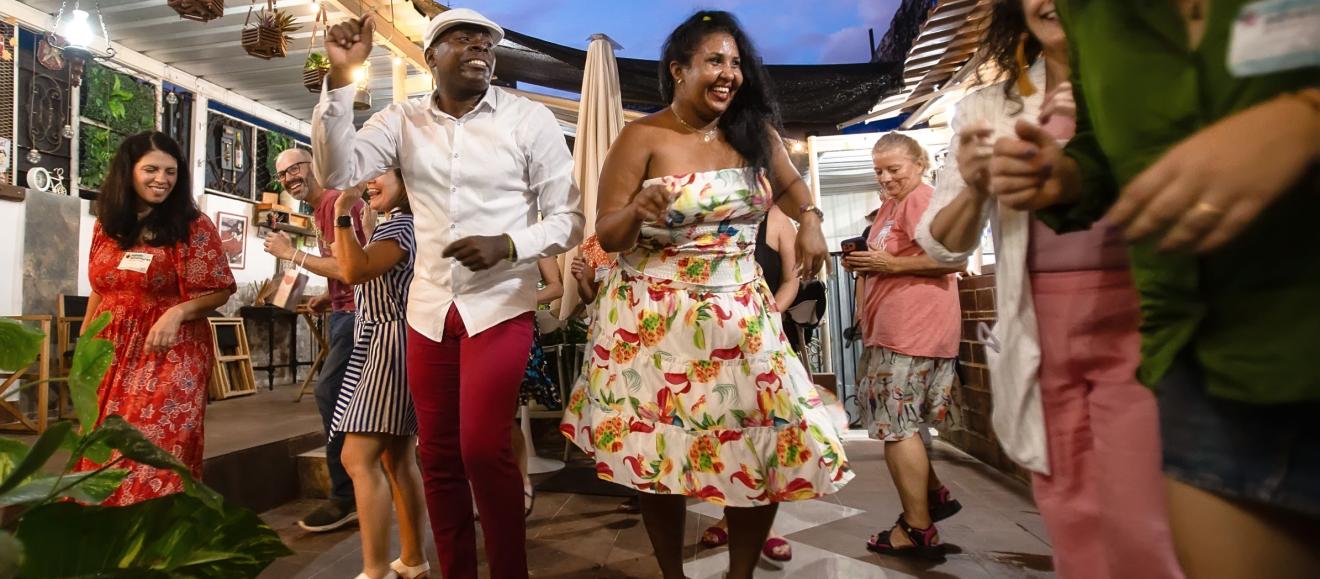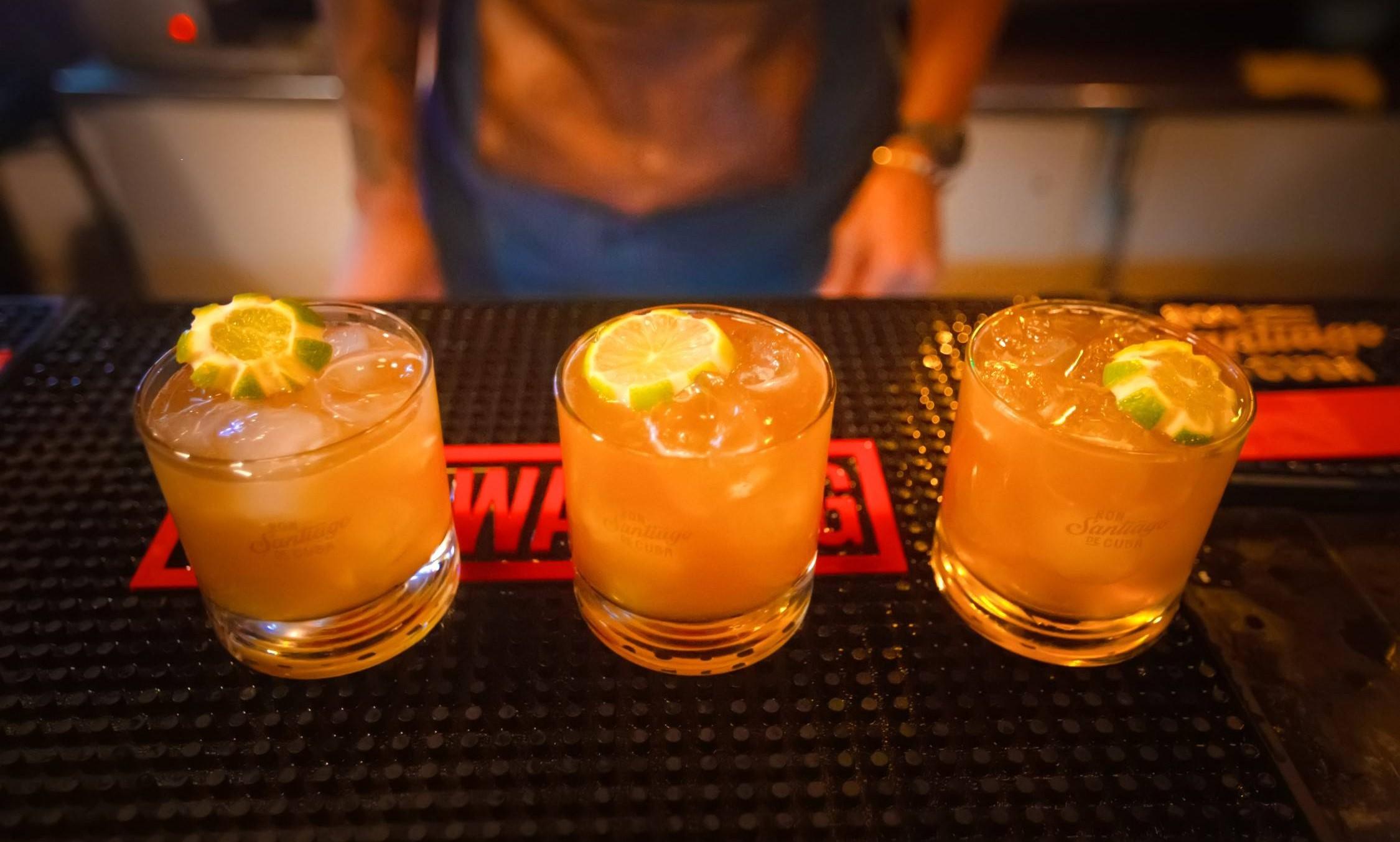D’Viajeros Immigration Forms
Follow these step-by-step instructions to get the Cuba D’Viajeros QR code required to enter Cuba. Filling out the D’Viajeros form before departing for your trip is a requirement to enter Cuba.

Beyond the tropical beaches, pastel-coloured buildings and rum cocktails, there are some lesser-known—and surprising—facts about Cuba that make it even more alluring. From its distinctive Spanish dialect and spiritual traditions to wildlife found nowhere else on earth, there’s more to this island nation than meets the eye.
Behind colonial facades, with the aroma of freshly ground coffee and soulful music emanating from doorways, Havana’s tours and museums reveal its unusual history and thriving arts scene. Archipelagos with thousands of coral islands invite visitors to breathe in the balmy, floral-scented air. The more you explore, the more you’ll uncover Cuba’s secrets.
From tiny frogs to vintage trains, find out what makes Cuba unique. Influenced over the centuries by a blend of Spanish colonisation, African spiritual traditions, Caribbean music and North American customs, Cuba’s energetic culture permeates everyday life. Be inspired by these nine intriguing facts about one of the most fascinating destinations in the world.
Thousands of islands and cays dot Cuba’s coast—more than any other Caribbean nation. Visit Isla de la Juventud, the second-largest island and part of the Canarreos Archipelago, for its historical sites and remote beaches. Further south, try snorkelling and wildlife-spotting on Jardines de la Reina archipelago. You might be lucky enough to see some of the beautiful yet elusive hummingbirds of Cuba. If you’re a nature lover, head north to Sabana-Camagüey Archipelago for coral reefs and mangrove forests throughout over 2,000 cays and islets.
It’s hard to miss the shapely classic cars lining the streets throughout Cuba. Like a massive living showroom dating back to the 1930s, around 60,000 vintage American vehicles cruise the island. Painted in bold colours, models like Chevrolets, Buicks and Cadillacs turn each road into a moving postcard. Known locally as almendrones, meaning ‘almond-shaped’, these classic cars aren’t purely for show. In addition to linking local culture, history and national pride, they are also used as taxis, making them an integral part of everyday life in Cuba. Ride in a retro cruiser and discover the art of restoration with our Under the Hood Experience, an unforgettable treat for car enthusiasts!
The bee hummingbird, known locally as the zunzuncito, is the world’s smallest bird. Under five centimetres long, it is so small that it’s sometimes mistaken for an insect! With brightly coloured feathers and rapid wing movements, the bee hummingbirds of Cuba are a cherished sight, symbolising love and resilience. Not to be outdone, the Monte Iberia dwarf frog holds the record for being the smallest amphibian in the Northern Hemisphere. Reaching just one centimetre in length, this frog is roughly the size of the nail on your little finger!
Join one of the best Cuba bird watching tours for twitchers for a chance to view over 20 bird species only found in Cuba.
In 1961, the Cuban government sent thousands of young adults to teach reading and writing in rural areas in an ambitious literacy initiative that transformed education while helping bridge social divides. As part of its strong commitment to literacy, the government's compulsory education system now provides free schooling at all levels, including university. The result? Nearly 100% of the population is literate—one of the highest rates globally!
Cuba’s indigenous languages, Taíno and Guanahatabey, were replaced by Spanish in the 18th century—but not entirely. Elements of these remain in the way Spanish is spoken in Cuba, but are blended with linguistic influences from Europe, West Africa and North America. With its distinctive vocabulary, pronunciation and tonal rhythms, the Cuban dialect is now significantly different from traditional Spanish. Spend two or more days in Havana for private Spanish lessons, Cuba-style, on a language immersion short stay experience.
Cuban culture and traditions evolved from the fusion of African and European beliefs. One example of this is the Santería belief system, originating from the spiritual beliefs of the Yoruba people from West Africa, and is celebrated through art, dance and cultural expression in daily life. Combined with Roman Catholic traditions introduced by the Spanish, rituals are often held in homes with altars for private ceremonies and offerings. Discover how spiritual traditions have influenced Afro-Cuban Culture on a guided tour in central Havana with one of our local experts.
Dancing in Cuba is a powerful form of connection and is characterised by swaying hips and synchronised movements that flow to the sounds of percussion and brass. Danzón, the official dance of Cuba, blends elegant European court traditions with bold, rhythmic Afro-Cuban moves. One of the most popular forms is salsa, while the cha-cha-chá offers fun, flirty, compact steps that’ll keep you energised as you shuffle across the floor. The sensual rumba with its intricate, energetic moves and quick-paced mambo are other expressive Cuban dance styles performed to the accompaniment of infectious beats. Whether you watch from the sidelines or hit the dance floor, join in with one of the island’s most celebrated traditions. Try salsa lessons as part of our Cuban cultural tour!
All aboard! One of the least-known facts about Cuba is that it made history in 1837 as the first Latin American country to build a rail system. Cuba even preceded their Spanish colonisers, who built their first railway over a decade later. Motivated by the booming sugar trade, the train line connected Havana to Bejucal for more efficient transportation of people and supplies. The original route remains active today as part of Cuba’s extensive railway network. In Havana, visit the Museo del Ferrocarril housed in the old Cristina station and journey back into Cuba’s fascinating railroad history!
In the field of sports, what makes Cuba unique among its Latin American neighbours is its passion for baseball. Arriving in Cuba from the United States in the 1860s, it quickly became part of the island’s national identity, overshadowing pastimes introduced by the Spanish, such as bullfighting. Today, Cuba produces world-class players and boasts one of the top-ranked leagues globally. Catch a game as part of a classic style or multi-day tour, or on a private or custom tour during the domestic season between March and July.
From cruising in classic American cars to taking immersive Spanish lessons, Cuba invites travellers to experience and enjoy its customs and way of life. At Cuban Adventures, we take pride in designing unforgettable, immersive small group tours that showcase the history, culture and traditions that make Cuba so special. While supporting local entrepreneurs and conservation efforts, our local tour leaders and guides help unlock the stories, people and places through our signature tour packages, with custom options tailored to your interests. Browse our extensive range of tours, or design your own today!
Author: Cuban Adventures
Our passion is providing authentic cultural experiences of Cuba through our award-winning small group tours. We dedicate ourselves exclusively to Cuba, which means we are truly specialised in this unique country.
If you’ve been dreaming of Cuba and want to learn more about this fascinating country before your trip, read our blog for a complete Cuban travel guide with tips and local insights.

As the sun sets and the oppressive heat subsides, people start to relax from the daily grind, the city slows from its usual hustle and bustle and fun is on the agenda, the kind of fun that only Havana’s nightlife can deliver. This is our guide to the best bars and nightclubs in Havana.